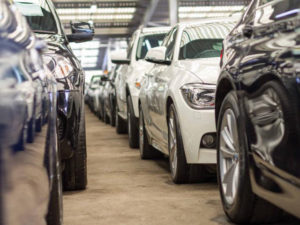No cliff edge in sight for used car values, affirms Cox Automotive
Despite signs of an end to significant rises in used vehicle values, an imminent drop in pricing is unlikely due to the lack of new available stock.

Cox Automotive said the changes reflect a 31-million shortfall in new vehicles over the past two years, which will cause supply constraints within the used car marke
The report comes from Cox Automotive, which has revised its quarterly and full-year used car market forecasts to reflect the changing shape of the market better.
In the latest issue of its AutoFocus quarterly insight roundup, Cox Automotive outlines a range of scenarios to predict the best, middle and worst-case outcomes for the used vehicle market based on current market data.
In the best-case scenario for 2022, it predicts the year will end on 7.21 million transactions, falling 4.2% year-on-year, 2.2% below the 2001-2019 average and a 9.1% decline on Q4 2019 figures. This represents a 7.3% downgrade on the company’s previous forecast.
Cox Automotive’s baseline scenario for 2022 predicts 7.05 million used car transactions throughout 2022, a 6.4% decrease year-on-year, 4.4% reduction on the 2001-2019 average, and 11.2% fall when compared with the most recent pre-pandemic performance. This is a 4.8% downgrade on Cox Automotive’s previous forecast.
The downside scenario also sees a 0.7% reduction on previous forecasts. The company projects 6.90 million use car transactions, 8.4% down year-on-year, 6.4% down on the 2001-2019 average, and a drop of 13.0% on Q4 2019 data.
Philip Nothard, insight and strategy director, Cox Automotive, said the changes reflect a 31-million shortfall in new vehicles over the past two years, which will cause supply constraints within the used car market.
Nothard explained: “The used car market has been grappling with a shortage of vehicles for some time. This, coupled with high demand, has caused prices to rise to record levels. While the sector has become accustomed to fewer vehicles and higher prices, the full extent of the global new vehicle shortfall will have a significant effect in the coming months.”
The top five European markets registered 6.5 million fewer vehicles in 2020 and 2021 compared to the previous two years. As the used market depends on new vehicles to push stock through, further pressures are inevitable.
Nothard added: “Challenges exist mostly in the zero to six, and sub-12-month market, although we will soon see more of the same within the one-to-three-year sector, particularly over the next 24 months. Eventually, shortages will trickle down to the late three-year and five-year market.”
But while used vehicle values show signs of realignment in wholesale and retail markets, the lack of new vehicles means they are not about to fall off a cliff edge. Retailers are receiving stiff competition for product from new competitors who adjusted their stock profile during the pandemic, for example, daily rental companies that turned to the used market to compensate for the lack of new vehicles. Prices are therefore expected to remain stable in the short to medium term, while a downwards trajectory is inevitable in the longer term. And dealers are also adapting well to derive profit from new avenues – but Cox also warned that they should more than ever work “to grasp supply dynamics at a model and derivative level”.
To read more in AutoFocus, click here.












